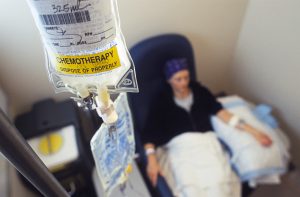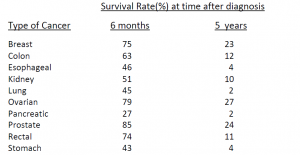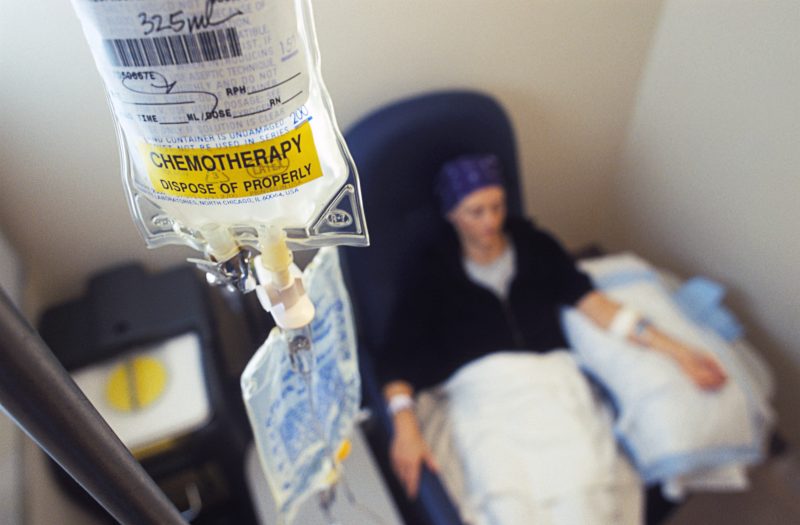
Chemotherapy is usually the first treatment option that enters the minds of those who are diagnosed with cancer as it has become the normal response to a cancer diagnoses. It is one of the traditional responses to cancer in today’s modern medicine, but is it actually the best option to treat cancer?
What actually happens to the body when it undergoes such a strenuous chemical attack?
Are there more natural alternatives that could be just as effective?
History of Chemotherapy
Let’s begin by understanding the history behind chemotherapy. In World War I, many soldiers were killed or injured by a chemical gas known as mustard gas. Mustard gas is absorbed through the skin so gas masks were useless against this deadly weapon.
After WWI ended, thousands had died from or been crippled by mustard gas. As World War II began to approach, the Allies were fearful of more chemical attacks so they began to look into the creation of antidotes.
While researching the medical records of those who had been affected in WWI, the researchers saw that those men had decreased immune cell counts. They theorized that if mustard gas could kill healthy cells, it could also kill cancerous cells.
After successfully using nitrogen mustard (the compound used to make mustard gas) in animal trials, they received approval for their first human test.
A man known as J.D., who had severe lymphoma that prevented him from being able to swallow, sleep or even cross his arms because of the sizes of the tumors, became the first successful human test subject. Unfortunately, he died only six months later, but his story became the starting point for today’s modern chemotherapy treatments.
After WWII ended, UK chemist Professor Alexander Haddow began working with nitrogen mustard in an attempt to make it less toxic and more focused on its ability to kill cancer cells.
He was able to successfully tinker with the compound in such a way that revealed the characteristics necessary for preventing the growth of tumors in rats.
Years of development and study have molded Haddow’s work into the chemotherapy treatments used today.
Survival Statistics
Now that we understand its beginnings, it is important to take a look at the survival statistics as provided by the Cancer Treatment Centers of America (CTCA).
The website provides statistics from the CTCA’s database and the National Cancer Institute’s Surveillance, Epidemiology, and End Results (SEER) Program database, and they cover various types of cancers diagnosed between the years 2000 and 2013.
The following survival rates range from six months to five years after diagnosis based on the type of cancer from the SEER database (this database includes national results from a large number of institutions).
 Some of these numbers are encouraging and others are challenging to acknowledge, but there are ways to fight cancer to give yourself or your loved one the best chance to survive this horrible disease.
Some of these numbers are encouraging and others are challenging to acknowledge, but there are ways to fight cancer to give yourself or your loved one the best chance to survive this horrible disease.
As seen in the chart above, some of the cancers have higher survival rates than others, but did you know that the risk of getting a second cancer is still high after surviving the first round of cancer?
According to one holistic cancer strategist and breast cancer survivor, the connection between chemotherapy and the risk of developing a second cancer is not new information to the medical community.
The American Cancer Society has recognized that chemotherapy is a carcinogen that could lead to a second cancer after its use with the risk being even higher if chemotherapy and radiation are used together.
The most common “second cancers” associated with the use of chemotherapy and radiation are acute myelogenous leukemia (AML) and myelodysplastic syndrome (MDS).
Chemotherapy Ingredients
What specifically is in chemo that can cause a second type of cancer in the body? There are several types of chemotherapy agents that are used. They are commonly grouped according to their chemical structure.
Alkylating agents are drugs that prevent DNA replication in cells. They do this by binding to the DNA. The goal is to limit the cell’s ability to reproduce, and therefore, limit the growth of the cancer. Some of the most common examples of this type of drug includes mechlorethamine, cyclophosphamide, and ifosfamide.
Platinum-based drugs utilize platinum to interfere with the cellular process leading to cell death. Cisplatin, carboplatin and oxaliplatin are the traditional platinum-based chemotherapy drugs. According to one study, one of the major issues with this type of chemotherapy is tumor resistance. In addition to the high potential of resistance to platinum-based agents, the risk of developing leukemia greatly increases with increased use and when combined with radiation.
Topoisomerase inhibitors are drugs that prevent topoisomerases (enzymes that help separate DNA strands for replication) from performing separation. Topoisomerase II inhibitors including Etoposide and Teniposide can greatly increase the risk of leukemia as early as 2 to 3 years after it is given.
Mitotic inhibitors are plant-based derivatives that keep cells from dividing by stopping the production of the proteins necessary for cell reproduction. Examples include Docetaxel, Estramustine, Ixabepilone and others. Unfortunately, these agents can cause nerve damamge so they must be limited when used.
Corticosteroids (steroids) are commonly used for a variety of treatments apart from chemotherapy, but may also be used in cancer treatment. They are hormone-based drugs and may have familiar names—prednisone, methylprednisolone and dexamethasone. Oftentimes, steroids are specifically used to prevent nausea, vomiting and allergic reactions.
The greatest problem with using these drugs for the treatment of cancer is the fact that they are unable to differentiate between cancer cells and healthy cells.
If the chemotherapy drug is successfully altering or killing cancer cells, it is also successfully altering or killing healthy cells that are vital to recovery and healing.
One study indicated that the risk of developing leukemia after the use of chemotherapy and radiation to treat early-stage breast cancer in a large group of women was actually twice as high as had been previously reported.
Alternatives to Chemotherapy
The risk in using chemotherapy for treatment of cancer is evident, but what other alternatives are out there?
First, it is important to seek out the opinions of more than one doctor. Cancer treatment plans should really be individualized and include less-intense therapies combined with nutritional plans.
Targeted therapies focus on determining what pathways made the cancer like it is. The process specifically identifies which pathways to block and uses treatments to target and inhibit only those pathways.
This reduces the side-effects to little or none (i.e. a skin rash versus pneumonia) and shortens the length of time that a side-effect may occur (i.e. the length of the treatment versus the development of a second cancer ten years later). Some targeted therapies that have been approved for use by the FDA include:
• Hormone therapies — prevents or interferes with the production of specific hormones. These have been approved for breast and prostate cancers.
• Gene expression modulators — modify gene expression
• Immunotherapy — specifically utilizes the immune system to target cancer cells
• Apoptosis inducers — cause cancer cells to go through the apoptosis process
• Angiogenesis inhibitors — used to block the growth of blood vessels to tumors
• Monoclonal antibodies that deliver toxic molecules — uses antibodies that target specific cells (cancer cells). Once attached, it releases a chemical that kills the cell without attacking normal cells.
Nutrition also plays a huge role in the successful treatment of and recovery from cancer. Utilizing a nutritionist or holistic doctor who has experience treating cancer can speed the treatment and recovery processes by boosting the immune system and “starving” the cancer cells (through eliminating sugar intake).
Taking nutrients like Beta Glucan can help to boost your immune system tremendously.
Many studies have been performed that show the significant impact that specific nutrition choices while enduring cancer can have during the treatment and healing processes.
Chemotherapy is a harsh process that can take a significant toll on the body not only immediately, but also for years after. Not only can it cause serious health issues, but it can also be the source of a second cancer years after the first cancer. Alternative options should be considered just as or even more seriously as the initial route to healing a cancer as they can be just as effective with fewer and less intense short- and long-term side-effects.
Go to the next page and learn about a powerful nutrient that many proven drugs like Penicillin, Cyclosporin and Krestin have replicated after that can protect your body from cancer –
About the Author:
Emma Deangela is the best selling author of The Alkaline Diet Program and 80/20 Fat Loss. She has helped over tens of thousands of men and women to lose weight and transform their health with sound nutrition advice. Learn how you can lose weight fast – How to lose weight by adding these alkaline foods.
Do you or any of your friends or family undergo chemotherapy? Share with us more about your experience if it is effective or not?
Please share with your friends this scented candle article using any of the social media and email buttons on the left of our website.


Leave a Reply